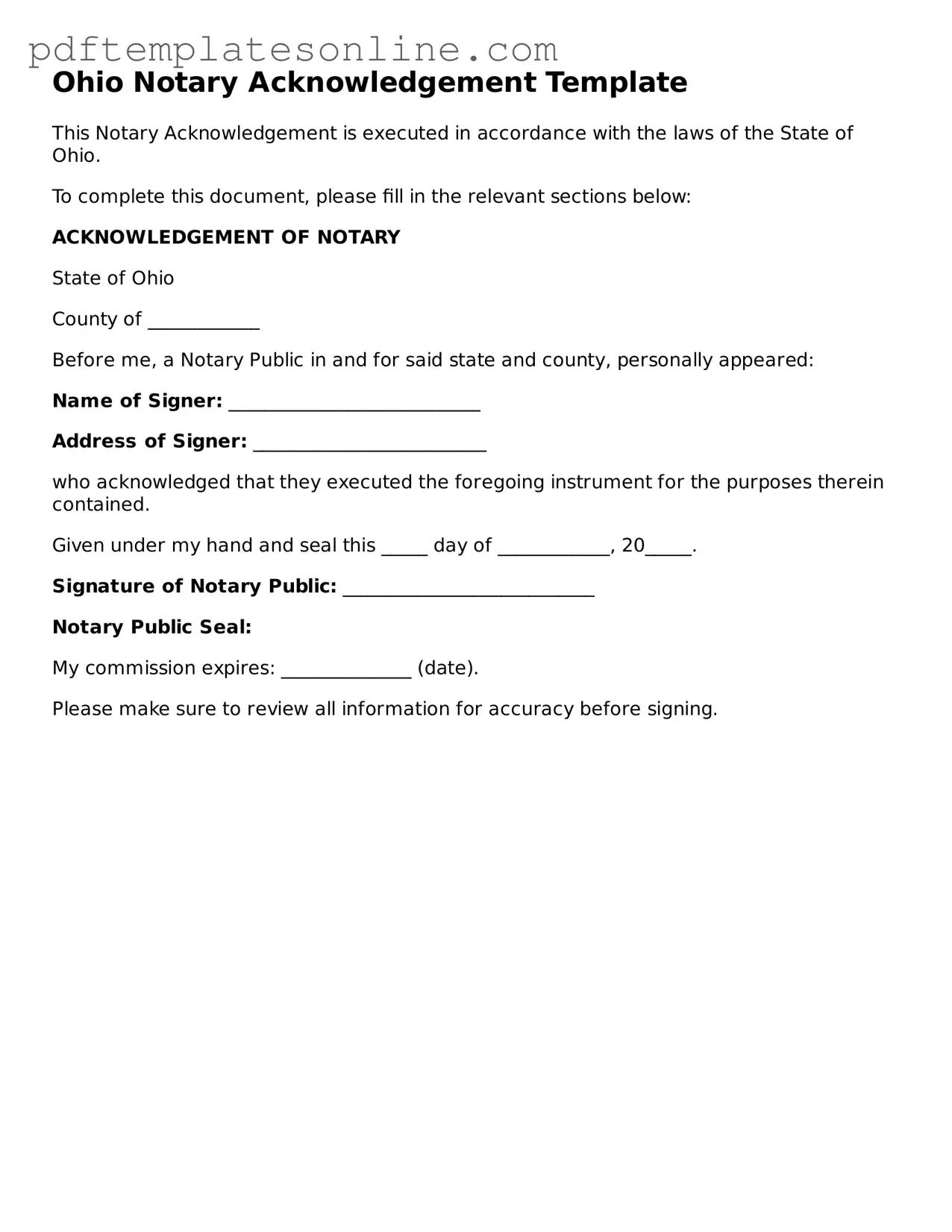Filling out the Ohio Notary Acknowledgement form can seem straightforward, but many people make common mistakes that can lead to delays or even rejection of the document. One frequent error is failing to include the correct date. It's essential to ensure that the date matches the day when the acknowledgment is performed. If the date is incorrect or missing, it can create confusion and may invalidate the notarization.
Another mistake often made is neglecting to sign the document in front of the notary. The individual who is signing the document must be present during the notarization process. If the notary is asked to acknowledge a signature that was already signed without their presence, the acknowledgment cannot be valid. This step is crucial for ensuring the authenticity of the signature.
People also sometimes overlook the requirement to provide identification. A notary must verify the identity of the person signing the document. If the signer does not bring an acceptable form of identification, such as a driver’s license or passport, the notary cannot proceed with the acknowledgment. Always check in advance to ensure you have the necessary ID.
In addition, many individuals forget to fill in all required fields on the form. Every section needs to be completed to avoid confusion later on. Leaving blank spaces can lead to misunderstandings about the document's validity. Make sure to review the form thoroughly before submitting it.
Another common oversight is using an outdated version of the form. Laws and regulations can change, so it’s important to ensure that you are using the most current version of the Ohio Notary Acknowledgment form. Using an outdated form could lead to complications or the form being rejected altogether.
Lastly, people often fail to understand the difference between a notary acknowledgment and a notary jurat. While both involve notarization, they serve different purposes. An acknowledgment verifies that the signer willingly signed the document, while a jurat involves the signer taking an oath. Make sure you know which one you need to avoid unnecessary mistakes.
